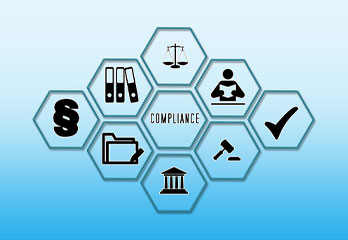The phrase “Digital Customer Engagement,” commonly acknowledged to be the destiny of customer engagement, has been used to explain everything from leading apps, websites, and social media reports to customer reviews and loyalty plans. However, this broadness has produced confusion as to what the phrase really means.
1. What is digital customer engagement?
Digital customer engagement is total the ways a client communicates with your business, and how you associate with them. Assume of it like this: it’s all of the digital touchpoints your consumer has with your label, including email, social media, and also your website. These actions work collectively to create (or hurt) your connections with your customers.
2. What’s in a tool?
Digital engagement tools have previously shown themselves to be successful. However, the capacity to consistently control their use and secure their continuing profitability proceeds to be obscure.
There is an entirely too familiar scenario where a company spends gradually in time and means to provide a full series of digital touchpoints – only to discover that the app that was downloaded in extreme numbers is only seldom used, that the optimized website gets many of “bounce-backs,” and that call quantities advance to be as high as always. In this situation, only half the fight has been accomplished.
The Digital Customer Engagement mechanisms are all there and primed to work, but the difficulty is those assets are frequently not combined, so they’re not running together to redirect customer co operations to digital ways.
The resolution to this is Omni-channel. Unquestionably, the cause why Digital Customer Engagement is slated to manage the future of customer communications.
3. Digital Knowledge: The New Heart of Customer Engagement
We all recognize (don’t we?) that digital activity is being pushed by the many disruptive organizations developing the face of the world around us. We further know that a sequence of digitally authorized consumers and always-on connectivity indicates that customer expectations of any business that wants to assist them have dramatically changed–today’s consumers’ demand (and interest) more than ever.
The problem many businesses are beginning to question is moderately simple: “How can our firm hold the influence of digital innovation to completely interlace our customers–and do so quicker and more efficiently than our opponents?”
It’s an essential question that’s running to be even more significant in the years to come because digital is frequently at the heart of everything you (and your clients) do. Most firms recognize that the right answer is to produce a digital adventure strategy–where things start to come apart is about what that really means.
4. Digital Increasingly At The market
In today’s world–to speak nothing of tomorrows–you just can’t depart digital activity from your company, brand, and customer experience policies. That’s because digital is at the essence of completely everything–and demands to tie all the way behind to (and through) the center of your company.
If your brand has prepared its job and strongly established customer expectations of the reality they’ll have, then your customer activity strategy explains what that action is and helps herald distribution of a uniform experience for all your consumers, no circumstance how they like to combine.
Your digital experience approach is what causes your customer experience approach to life–guiding the study and implementation of customer activities across all digital courses. Importantly, that involves the capacity to seamlessly combine with and flow from one channel to the following across growing digital and offline ways.
As digital communications remain to grow, touch points will advance to get more complicated and interactive. And buyers will continue to need faster, more communicative, and more specific products, services, and communications. So the capacity to drop methods, add smart touch points, and both analyze and enhance customer experience is continuing to be based on a digital experience policy that guarantees the frequently digital expertise you surrender are faster, smarter, and more enjoyable.
5. Digital Customer Encounter vs. Customer Encounter
The expansive umbrella of customer experience can incorporate anything from regular customer assistance courses to new digital interfaces that people practice to interact with businesses. The digital customer encounter concentrates on the latter; including both front-end assistance and back-office method optimization that eventually helps customers.
Because both ideas are strongly focused on satisfying customer expectations, they overlay as frequently as digital and non-digital do in today’s business. It may be also beneficial to define what digital customer experience isn’t so that businesses can create positive results they have the proper mindset in their way to Digital customer experience strategy.
6. Leading the Digital Customer Experience
Given that Digital customers and customers so often protrude, some have questioned whether running the digital customer experience is even appropriate. There are two ways to count:
Center on the holistic customer lifecycle
Providing equal consideration to the way digital and non-digital activities complement each other and optimizing both. This method employs Digital customer engagement as simply one component of the overall customer contact policy.
Direct originally on digital customer experience.
This isn’t simply a subset of customer experience, and a great customer experience plan doesn’t compare to a big digital customer activity policy. It goes on to explain that online and offline customers have diverse requirements and expectations, which is what gives a center on more agreeable Digital customer experience so great — organizations can’t believe that their work to enhance customer knowledge will change well to digital experiences.
Nevertheless, it also implies that there is a transparent line between online and offline, which is frequently wrong as channels blend and converges during the customer journey.
7. Why is the digital customer experience necessary?
Customer support is difficult to make but simple to lose: almost half of the customers say they’d turnabout to a contestant after just one bad encounter. Gone are the times when a company could take a one-size-fits-all path to its customer exposure.
The data is obvious: the customer expectations of your business are sky-high. Customers need to be negotiated as individuals, indicating they demand companies to understand their choices and purchase history. To achieve that, businesses require to be capable to harness their customer communications across stages and use that data into actionable shrewdness.







